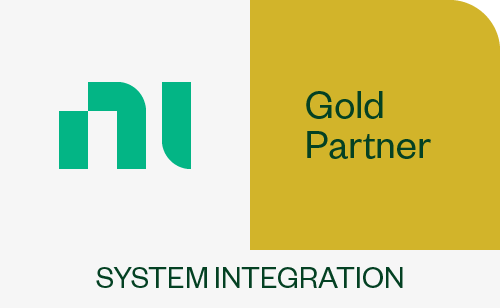Tag Archive for: iTestSystem
ITM adds NI-9205 compatibility to iTestSystem
in Announcements, Blog Posts/by Mark Yeager
We are excited to announce that the NI-9205 general purpose analog input module can now be used with iTestSystem and NI CompactDAQ. Adding this module allows engineers to expand the use of iTestSystem from structural testing and analysis where signal phase relationship is important, into data logging where phase isn’t as high a priority. The NI-9205 features 32 single-ended or 16 differential analog inputs, 16-bit resolution, and a maximum sampling rate of 250 kS/s.
Our customers really wanted this module added and I can see why. If the NI-9205 module is combined with iTestSystem’s free feature set, they could build a flexible and cost effective data logger. With the extended feature set of iTestSystem, they could also build a standalone logger, with triggering and CAN support.
For more information, visit https://3.133.116.34
Marquette University’s “Smart Building” Provides Real-World Data
in Announcements/by Tim Carlier
MILFORD, OH– Integrated Test & Measurement (ITM) announces a “Smart Building” program in partnership with Marquette University. This unique initiative allows next generation structural engineers to perform large-scale experiments and obtain real-time results using data collected on the very building in which they are learning. ITM was selected to provide the technology and services for the program.
Powerful Software – Powerful Results
The system is powered by ITM’s configurable iTestSystem software platform. The software allows users to organize, acquire and view important engineering data using National Instruments (NI) hardware. Using iTestSystem, a building monitoring system was created to collect data from a weather station together with more than 120 strain gauge sensors installed along beams, braces and columns inside the Engineering Hall at Marquette University.
The system not only measures wind speed on the five story structure; it can actually “feel” the wind load during gusts and record its impact on the facility. Data is broadcast in real time to anyone plugged into the servers through their mobile device. Observing the data allows students to understand how a building’s systems “share lateral load” during wind events. In addition, instruments along support beams in the Engineering Materials and Structural Testing lab allow students to analyze moving loads as the crane moves around the bay. At the same time floor sensors measure the impact of people moving through the building. This information will impact future building design and potential building code modifications.
For more information, visit https://3.133.116.34
Engineering on the fringe of big data
in Announcements, Blog Posts/by Tim Carlier
As test engineers, we are driven by data. It motivates everything we do. The faster we can gather, manage and analyze vast amounts of data, the more effective and efficient we become at understanding the stresses that tax modern machinery.
That is why I’m excited to share some of the recent advances Integrated Test & Measurement (ITM) has made as it relates to our large channel synchronized count monitoring systems.
In many ways, we are hitting the extreme fringes in terms of gathering big data, and these developments have all been made possible by our proprietary iTestSystem software.
(Download a free version of our base software.)
Test Engineering Extremes using iTestSystem and NI cDAQ
- Collecting and managing terabytes of data during month’s long test
- Synchronizing 25 NI 9188 cDAQ chassis to collect more than a thousand (1000) channels of strain, acceleration, temperature, voltage and current data
- Gathering data from on-board systems such as CAN, CCP and customized machine PLC protocols in the same data file as analog data
- Collecting high voltage and contact temperature data using isolated amplifiers at one megahertz (1MHz)
 Driven by the opportunity to engineer tests for both the rail industry and heavy machinery manufacturers, our team has been able to collect, manage and monitor terabytes of synchronized data during month’s long tests.
Driven by the opportunity to engineer tests for both the rail industry and heavy machinery manufacturers, our team has been able to collect, manage and monitor terabytes of synchronized data during month’s long tests.
The process includes designing and installing data acquisition (DAQ) systems to gather more than a thousand channels of strain, acceleration, temperature, voltage and current data — all at once. Where before we had gathered a couple hundred channels of synced data, we’ve now passed the thousand-count mark. (Incidentally, the manufacturer of our cDAQ hardware platform informed us that our high-channel-count tests are more than double any other application of which they are aware.)
Beyond the volume of channels, we’ve also been able to harvest data from high voltage sources at extreme data rates. One of our colleagues even used iTestSystem to collect 16 channels of data from high voltage sources at 500kHz.
In addition, our engineers have been able to run these tests while at the same time gathering data from on-board systems such as CAN, CCP and customized machine PLC protocols — an advance that allows our clients to gain an even more complete picture of the precise environment at work in their machinery.
iTestSystem: TestView Plus
in Blog Posts, iTestSystem Application Video, Video/by Mark YeagerWatch this video to learn how to plot data in TestView Plus. TestView Plus is the tdms data graphing and analysis application for iTestSystem.
iTestSystem: Running MultiDAQ
in Blog Posts, iTestSystem Application Video, Video/by Tim CarlierWatch this video to learn how to collect data, configure real-time data graphs, and view sensor data in the iTestSystem MultiDAQ application.
MultiDAQ is the configurable iTestSystem data acquisition and logging application. Users can start and stop data collecting manually or with sensor threshold triggering. All data collected with MultiDAQ is saved in standard tdms file format.
iTestSystem: MultiDAQ Configuration
in Blog Posts, iTestSystem Application Video, Video/by Tim CarlierWatch this video to learn how to configure MultiDAQ!
MultiDAQ is the configurable iTestSystem data acquisition and logging application. Users can start and stop data collecting manually or with sensor threshold triggering. All data collected with MultiDAQ is saved in standard tdms file format.
iTestSystem: Update Service
in Blog Posts, iTestSystem Application Video, Video/by Tim CarlierWatch this video to learn how to use the iTestSystem Update Service. The Update Service application is used to retrieve program and application updates from the iTestSystem Cloud Server.
For more information about the Update Service or iTestSystem, contact Chase Petzinger via email: chase.petzinger@itestsystem.com or phone: (844) 837-8797 x704
iTestSystem: Registration
in Blog Posts, iTestSystem Application Video, Video/by Tim Carlier
Check out this video that shows how to register the free version of iTestSystem. Fill out a form with you name and email address and then receive a registration for the free version of iTestSystem.
ITM Offers Free Version of iTestSystem Software
in Announcements, Blog Posts/by Tim CarlierIntegrated Test & Measurement has an exciting announcement. As of now, you can download a free version of our proprietary iTestSystem software. Anyone can download it and begin using it at no charge from our website.
iTestSystem is a software platform that enables test engineers to organize, acquire and view important engineering data using National Instruments (NI) C-Series hardware. iTestsystem was specifically designed for use with National Instruments (NI) cDAQ hardware.
The new free version offers the following new options:
- Online Software Registration
- Modern Software Interface Console
- More cDAQ module choices
- Customizable Real Time Data Views (Plots)
- Updated data viewer (TestView +)
Download your copy now, and be sure to reach out and let us know how we can further assist you with this exciting new tool.
CONTACT INFORMATION
ITM | Integrated Test + Measurement
227 Water Street, Suite 300
Milford, OH 45150
Phone: 1.844.TestSys
Fax: 513.248.8453
Email: ITM Sales

ITM provides software development, structural and mechanical testing services, industrial monitoring, strain gauging, and data analysis solutions to clients on six continents. ITM is a recognized National Instruments Gold Alliance Partner.



